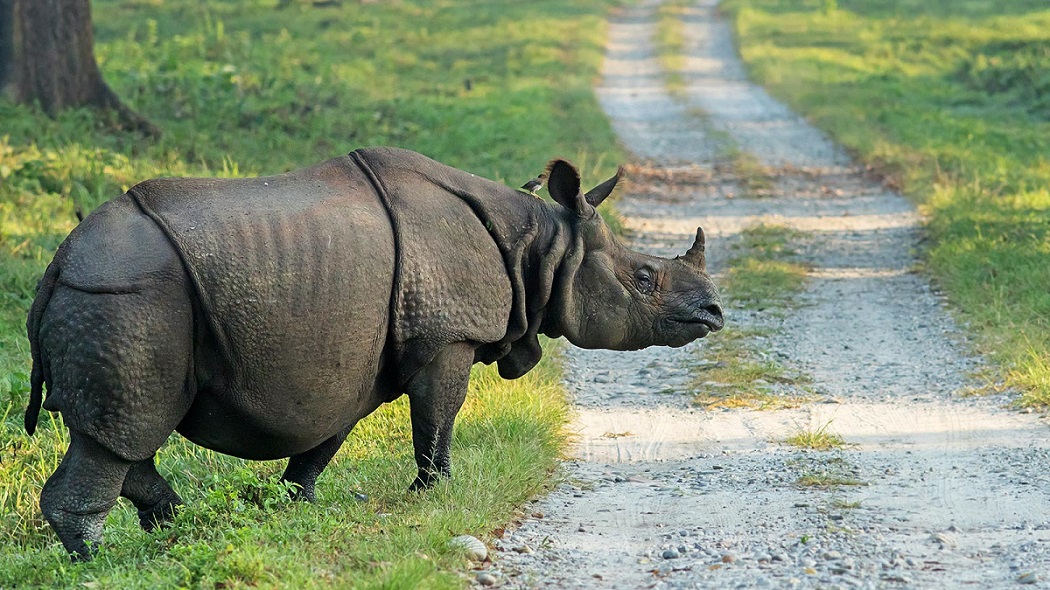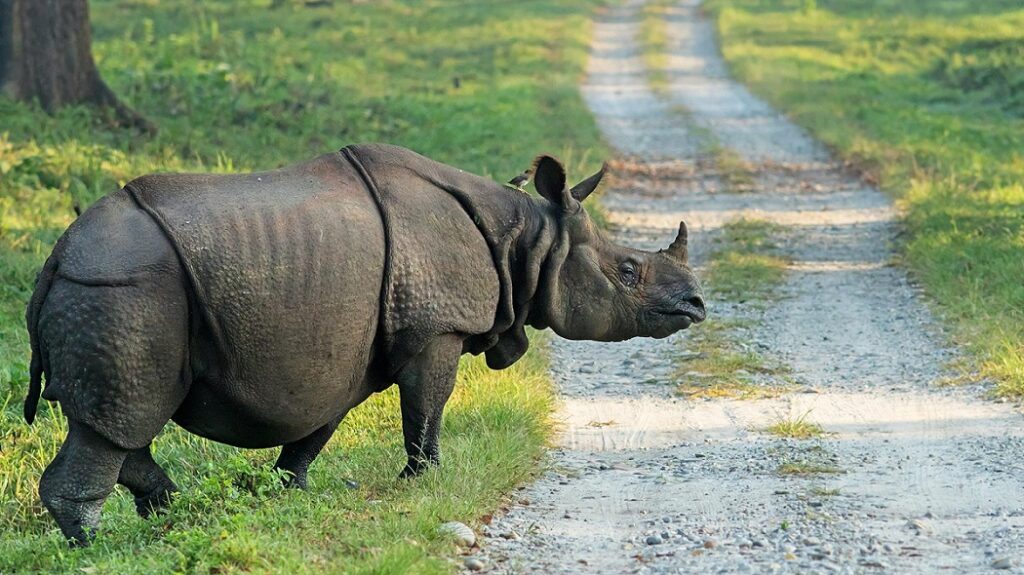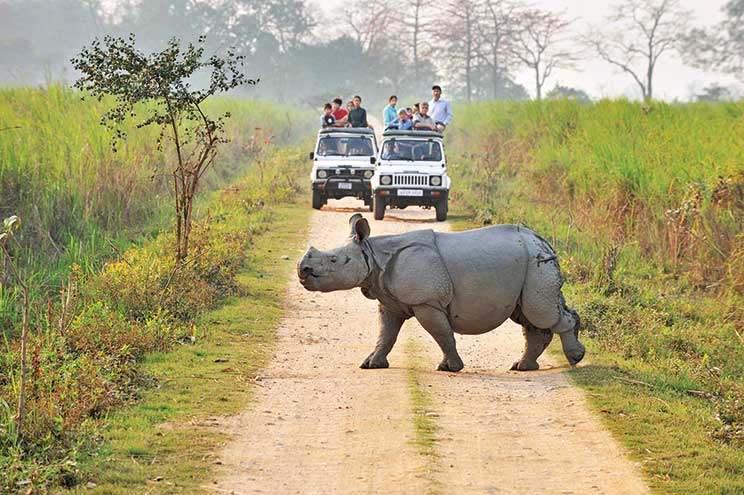
Kaziranga National Park: Only One-Horned Rhino Wonderland in India
Indeed, Kaziranga National Park is renowned for its population of the Indian one-horned rhinoceros. Situated in the northeastern state of Assam, India, this UNESCO World Heritage Site is home to around two-thirds of the world’s population of this species. The park’s diverse ecosystem also supports other rare and endangered species, including Bengal tigers, Asian elephants, and various species of birds. The one-horned rhinoceros, also known as the Indian rhinoceros, is a fascinating species characterized by its single horn and armor-like skin folds. Conservation efforts in Kaziranga have been vital in protecting these majestic creatures from threats such as poaching and habitat loss. Kaziranga’s success in protecting the one-horned rhinoceros has made it a symbol of wildlife conservation efforts in India and globally. Visitors to the park can enjoy safari experiences to witness these magnificent animals in their natural habitat, contributing to ecotourism and raising awareness about the importance of preserving biodiversity.

Have you heard about Jeep and Elephant Safari in Kaziranga?
Yes, both Jeep and Elephant safaris are popular ways to explore Kaziranga National Park and observe its rich wildlife up close. Jeep safari in Kaziranga offers visitors a comfortable and convenient way to explore the park’s diverse landscapes and wildlife habitats. These guided tours typically take visitors on designated routes through the park, allowing them to spot various animals such as the Indian one-horned rhinoceros, Bengal tigers, wild elephants, deer, wild boars, and numerous bird species. Jeep safaris are available in both the morning and afternoon, with trained guides providing valuable insights into the park’s ecology and wildlife behavior.
Elephant safari in Kaziranga provide a unique and memorable experience, allowing visitors to traverse through the park’s grasslands and wetlands atop trained elephants. These safaris offer a different perspective and often allow visitors to get closer to certain wildlife species, such as rhinoceroses and deer, compared to Jeep safaris. Additionally, the height advantage from atop an elephant provides excellent opportunities for wildlife viewing and photography. However, elephant safaris may have limited availability and are subject to weather and park conditions.
Both Jeep and Elephant safaris in Kaziranga National Park offer visitors the chance to immerse themselves in the beauty of this unique ecosystem and witness its extraordinary wildlife in their natural habitat. It’s advisable to book safaris in advance, especially during peak tourist seasons, to secure a spot and ensure a memorable experience.
Safari Timings in Kaziranga National Park
The safari timings in Kaziranga National Park typically vary based on the season and the zones within the park. Morning jeep safaris usually start early, around dawn, to maximize wildlife sightings when animals are most active. The exact timing can vary slightly depending on the season and sunrise timings. Elephant safaris also typically commence early in the morning, usually around sunrise. Afternoon jeep safaris generally start in the late morning or early afternoon, allowing visitors to explore the park during another period of wildlife activity. Again, exact timings may vary depending on the season and sunset timings. Elephant safaris in the afternoon are less common compared to morning safaris but may still be available depending on demand and park regulations.
Where to Stay in Kaziranga?
Kaziranga offers a range of accommodation options catering to different budgets and preferences, from luxury resorts to budget guesthouses. Some of the popular resorts include – Bargos Resort, Mandu The Escape Resort, Nature Hunt Eco Camp, Bon habi Resort, Hotel Landmark Woods, Infinity Resort, Bonvilla Retreat Hotel, Bagori Lodge and TG resorts are some of the best options available to stay in Kaziranga. It’s advisable to book accommodation in advance, especially during the peak tourist season (November to April), to ensure availability and secure the best rates. Additionally, consider the location of the accommodation at the park’s entry points to optimize your wildlife viewing experience.


